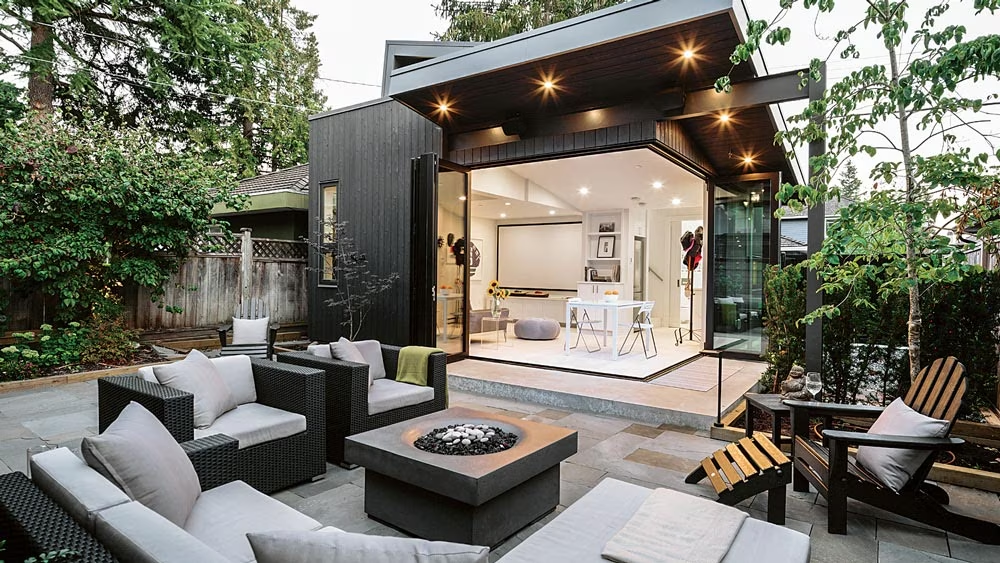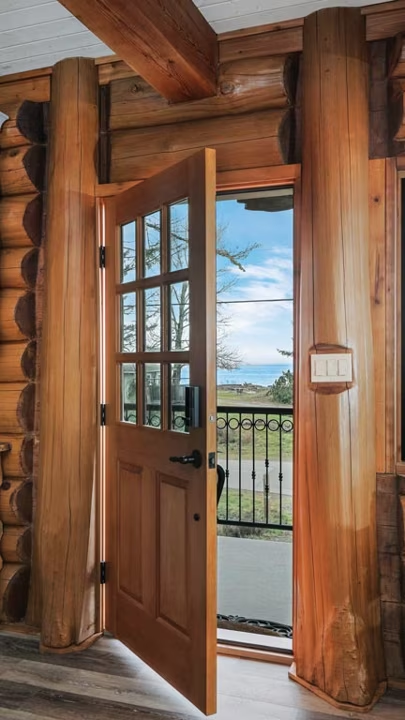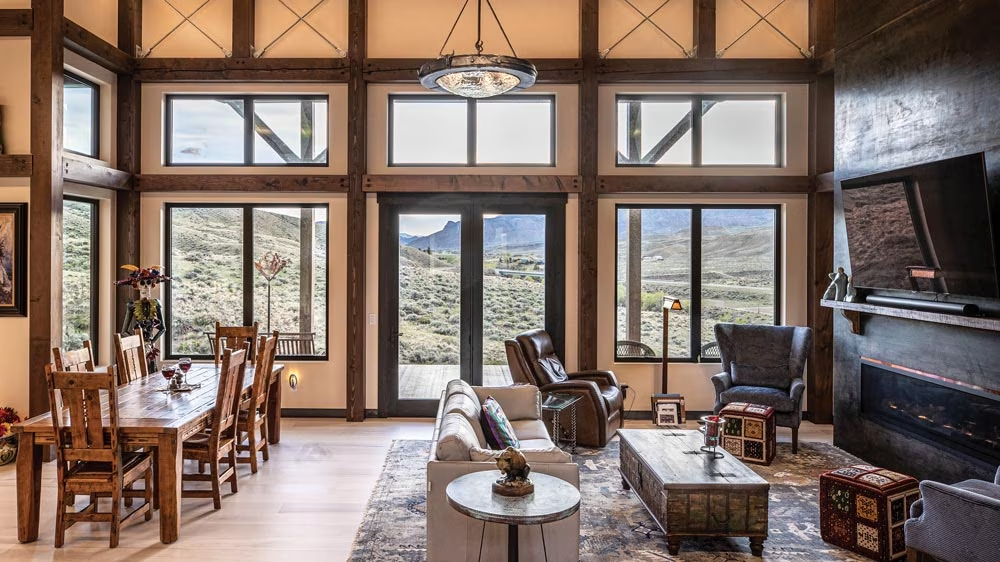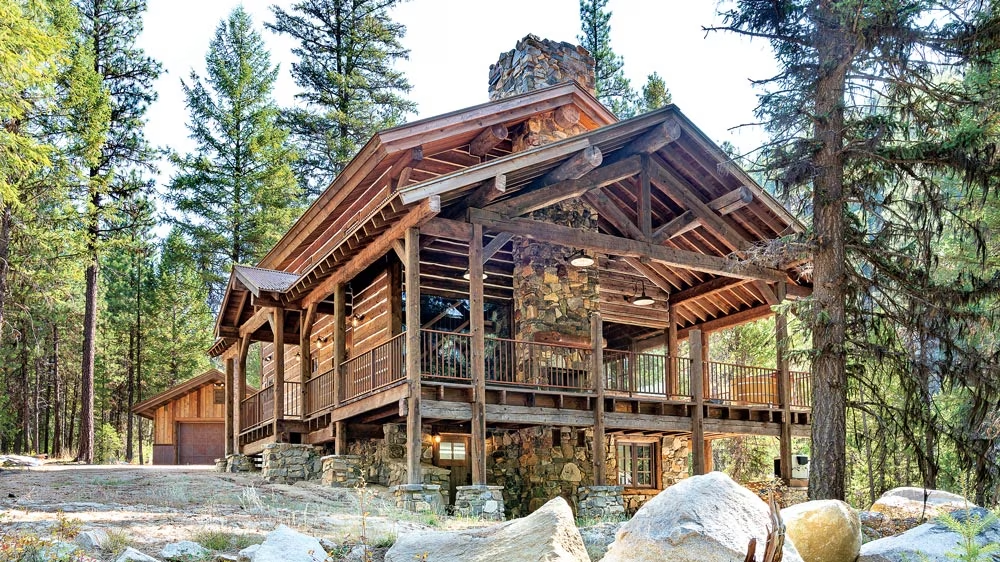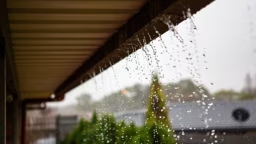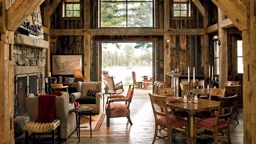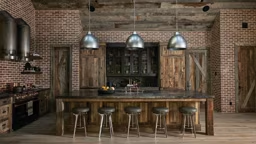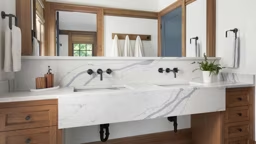Charred, brushed, stripped, blackened – the myriad ways to treat logs and timbers can sound like a recipe for a delicious dish. In many ways, achieving your dream design is a lot like following a recipe – if the ingredients are good, you can use a variety of techniques to achieve a delectable result. Here are a handful of the unique treatments that have homeowners (and us) drooling over the look of their wood.
Shou Sugi Ban
Also known as “yakisugi” in Japan, this treatment is a traditional Japanese wood preservation technique for thin-plank cladding, in which the surface of the wood is briefly charred at extremely high temperatures. Not only does this result in a stunning darkened surface, it actually improves the wood’s resistance to pests, weather and fungi. Ironically, it even makes it fire resistant. Though the concept seems straightforward, companies like Nakamoto Forestry prove just how nuanced it can be, with 38-plus finish options. Applied inside or out, it adds a striking contemporary edge to your design. For timber homeowners, it can be used to clad the entire exterior. In log or timber homes, it creates a statement-making accent inside or as a siding option for additions and dormers.
Water Peeled
Summit Log & Timber Homes employs a special process to unearth the beauty of large logs with precision. To achieve their “Latewood” finish, they carefully select western red cedar and Douglas fir trees for their size and character. Then, the tree is peeled down to its most recent growth layer.
“What we’re really doing is removing the bark with a water process, rather than using a draw knife,” explains Robert Lockerby, Summit’s owner and CEO. “With the water process, you’re taking it down to the last layer that grew that year. So, it maintains all the natural beauty of the wood: the natural contour of the tree, the knots, the ornate flares, the ripples, all that stuff. Mother Nature has done this wonderful job. That’s essentially what we’re trying to do here… showcase that beauty.”
While Summit builds entire homes using logs with the Latewood treatment, Robert suggests that the logs also can be striking as character posts — in an entryway or framing a set of stairs, for example.
Vinegar Stained
At this rustic ranch in Cody, Wyoming, architect Bill Tabberson worked with Canadian Timberframes to marry modern lines with rustic texture resulting in a contemporary design that still feels right at home on the rugged landscape. To play off the baseboards, the homeowners used a specially treated unfinished oak rubbed with vinegar and steel wool, which not only seals it, but turns the wood almost black. Vinegar causes the steel to rust via oxidization, which then colors the vinegar and, ultimately, the wood.
Brushed and Charred
Reclaimed wood has its merits — it offers the opportunity to achieve one-of-a-kind character while simultaneously upcycling old materials. That being said, it can be tricky to source and expensive to use. Modern innovations offer an alternative solution. Processes like those used by Big Cabin Log & Timber for their SchaferWood use heavy double brushing and charring to expose and enhance the wood’s character, while doubling down on durability.
“SchaferWood is not so much a product as it is a process for thermally treating and aging the wood,” explains Brian Schafer, founder and CEO of Big Cabin Log & Timber and Edgewood Log Homes. “The value in that is not just aesthetics, because the wood looks old; thermal treating has been proven to have other valuable properties. It case-hardens the outside layers of the wood in whatever form it takes: log, timber, siding, trim.”
The process is similar to shou sugi ban or yakisugi but differs in that it’s pre-brushed to remove the spring wood and not charred for as long. “By removing the spring wood, which is much more susceptible to weather, what remains is just the hard winter wood. Then heat-treating that winter wood with our SchaferWood antiquing process makes it even harder and more durable,” explains Brian.
“So the value to the client is that it achieves an antiqued look — and it’s really unique,” Brian continues. “But it also makes it more impervious to whatever nature is going to throw at it, whether that be ultraviolet degradation, moisture or wood-boring insects.”




